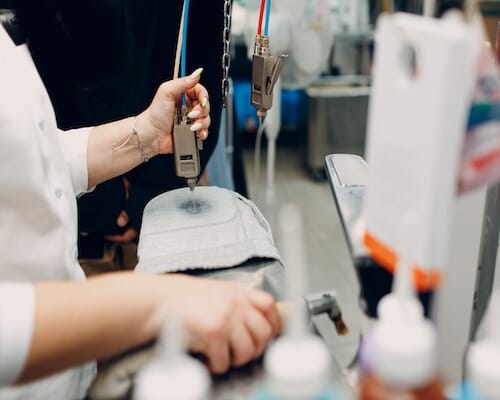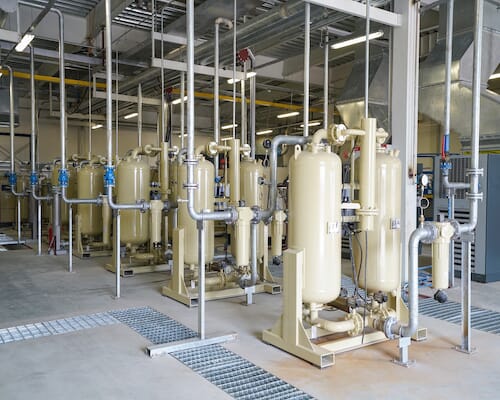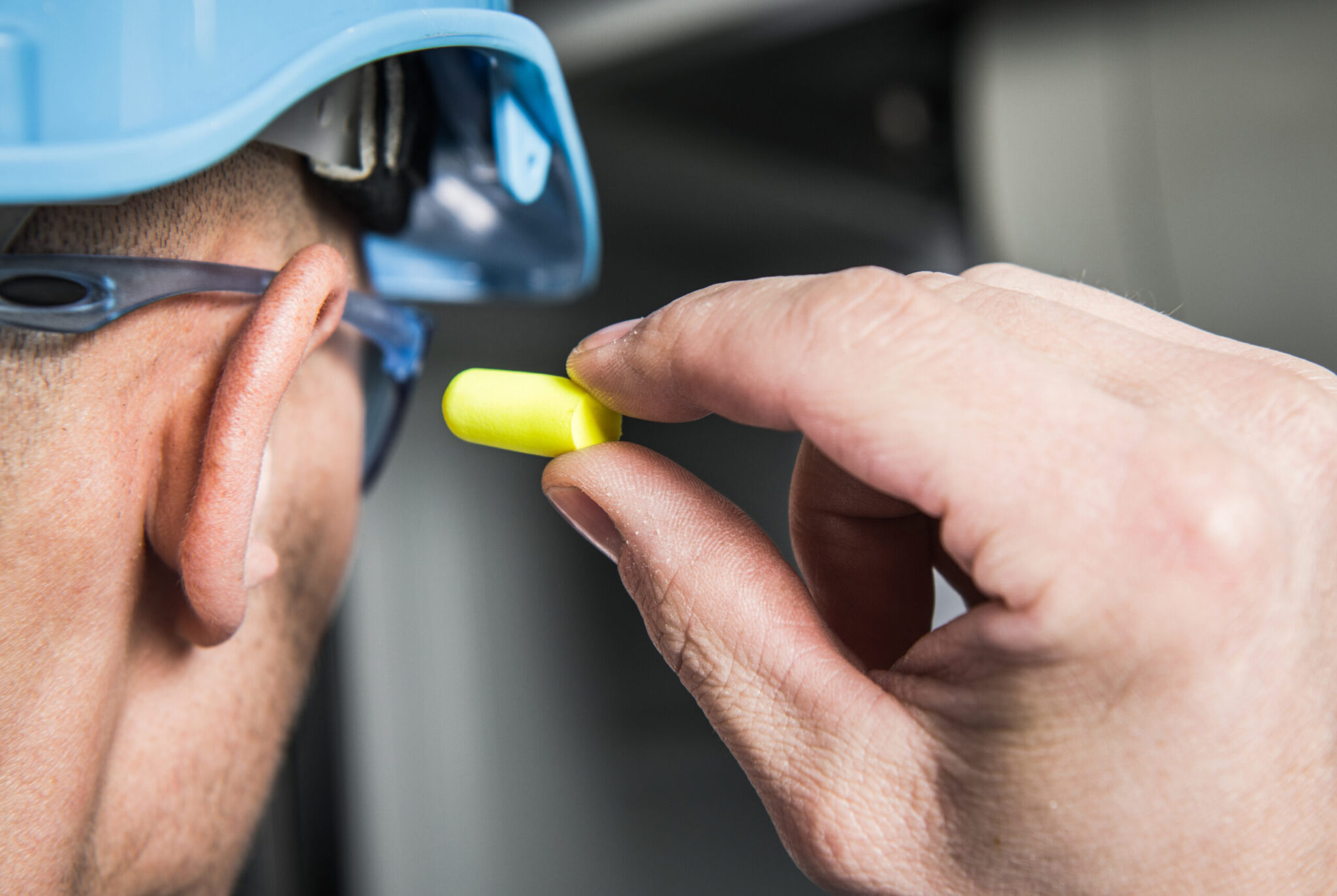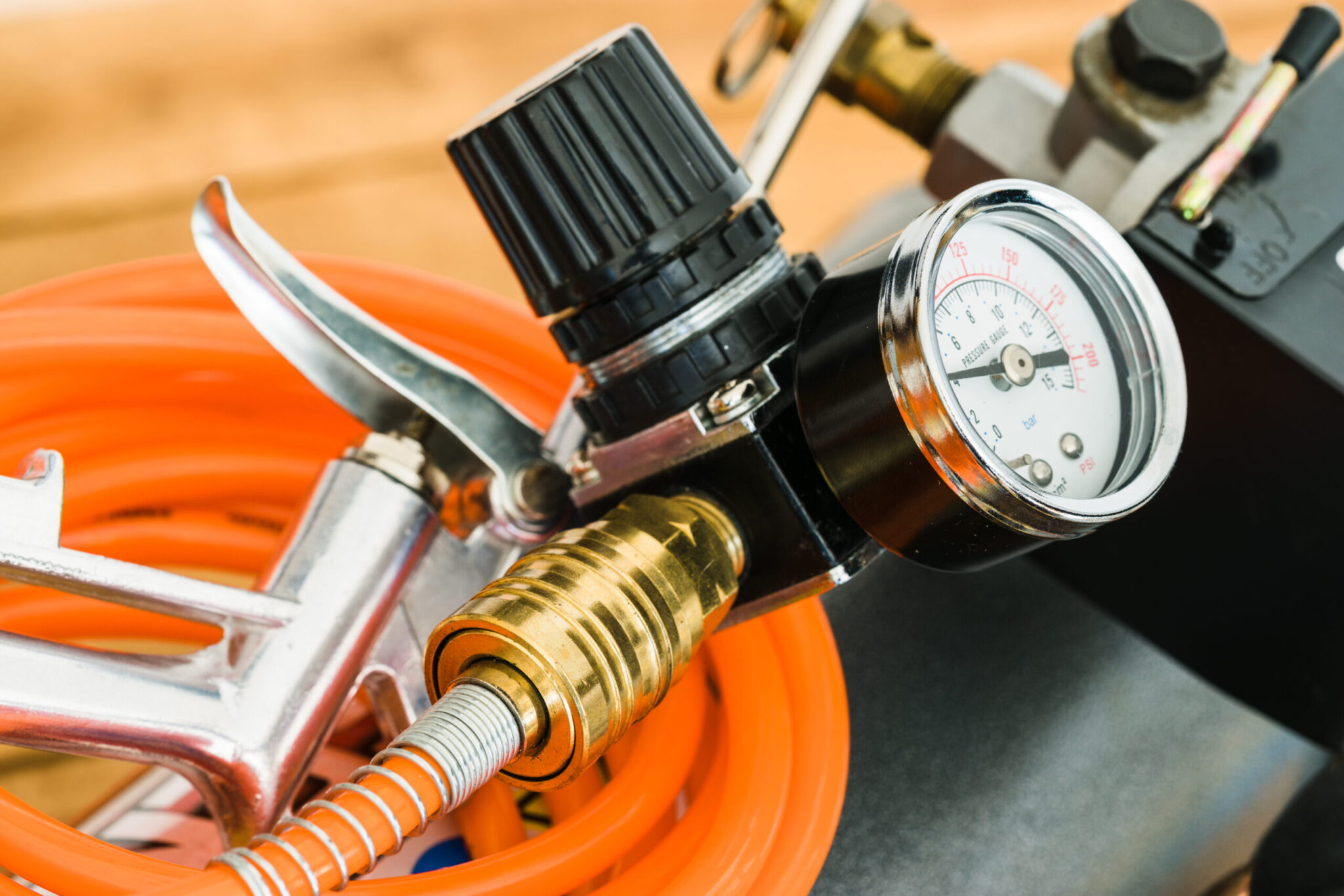
How to Pick the Right Air Compressor for Your Dry Cleaning Business
September 6, 2023
A Quick Guide to Accurately Size Air Compressor Tanks
September 27, 2023What Type of Commercial Air Compressor Does an Auto Shop Need?
Kaishan USA | September 13, 2023 | Uncategorized

When selecting an air compressor for your automotive shop, you should weigh the kinds of work you want to do and the tools you’re using.
Small automotive shops often get started with smaller 5 to 7.5 HP reciprocating (or piston) air compressors, primarily because they are inexpensive. But most businesses eventually outgrow these practical workhorses for a variety of reasons.
First, they have a limited duty cycle, typically running about 30 minutes in an hour. Run a recip longer, and you risk damaging your compressor and shortening its life. As a result, to properly size a recip, you need to buy a compressor with a larger horsepower rating and add a storage tank to give the pump time to cool down.
And second, they’re noisy. Combined with other tools in your shop, your compressor could drive sound levels over the 85 dBA limit, requiring hearing protection mandated by OSHA.

Combined with other tools in your shop, your compressor could drive sound levels high enough that you need to provide hearing protection for your team.
Exceeding Your Compressor’s Limits
You may get by with that recip at first, running an air hose or two from a receiver tank, using a digital tire inflator or small tools like impact wrenches, grinders or sanders. And generating between 15 and 28 CFM at 100 PSIG. But if you’re considering to a sandblaster for body work or a spray gun for painting, you’ll probably go beyond the limits of a reciprocating compressor.

A small automotive repair shop using a few hand tools like an impact wrench might find an inexpensive reciprocating compressor will meet their needs at the beginning. But they’ll look for a more robust solution when they want to grow.
As a result, owners of smaller automotive shops often find themselves looking to trade up to larger units with more power. Two critical issues in making this transition are sizing and electrical service.
Sizing
You will need to focus on three primary measurements of compressor size:
-
- CFM. CFM stands for cubic feet per minute, specifying the amount of compressed air that flows through your system. It’s a measure of the amount or volume of compressed air your compressor is producing. Air tools typically specify the CFM they need, and compressors will tell you how many they deliver. A higher CFM rate in an air compressor gives you more power and greater versatility in the number of applications you can service and the volume and pressure requirements those applications will require.
- PSIG. PSIG stands for pounds per square inch and measures the system pressure, the force your end-use application needs to perform a task. Having more PSIG available enables you to do more work with less effort. Most air tools need between 80 and 90 PSIG of pressure.
- HP. HP stands for horsepower, a measure of an air compressor’s motor performance and its ability to transfer energy. The HP rating indicates the size or power output of the motor that drives the air compressor. The more horsepower, the greater the capacity of the compressor to deliver compressed air at the required CFM and PSIG.
In general, you need enough PSIG, or pressure, to do the work your system is intended to do. You need enough CFM, or flow, to transfer the total energy you need for the tool’s particular task at the pressure you need. And you need enough HP, or performance, to generate that energy.
See more information on these key terms in our blog post, “Answers to Six Common Questions About Compressed Air.”
Don’t Make This Mistake!
One critical mistake people make is sometimes overestimating the power they need. If, for example, they have ten tools that all require 5 CFM of flow, they jump to the conclusion they then need 50 CFM of flow. But that’s much more than necessary.
The reason is the “use factor,” which accounts for the fact that the ten tools are usually not working at once. Some, admittedly, are in continuous use. But others are “intermittent,” at best. So that rather than needing the entire 50 CFM mentioned above, they only need 10 CFM.
Here’s the critical distinction you’ll want to make in calculating your flow and pressure needs:
-
- CFM is additive. Essentially you add all the continuous uses and allow for the intermittent ones: If you have two tools drawing 5 CFM of flow continuously, that’s 10 CFM you need. Then you add five tools needing 5 CFM of flow but only operating 20% of the time, and you have another 5 CFM. So, your total is 15 CFM. We’ve found that in a typical auto repair shop, each tech uses about 5 CFM.
- Pressure is set by the highest use. If you have ten tools needing 80 PSIG and one drawing 90, you’ll need 90 PSIG of pressure. You’ll want to set the pressure to match the tool with the highest operating pressure and equip the rest of your tools—those requiring less pressure—with pressure-reducing valves or regulators. But you shouldn’t set your operating pressure higher than you need it. That wastes energy, causes leaks, generates heat and increases wear.

You may need a pressure-reducing valve or regulator to connect applications that do not require the pressure level at which your air compressor system is operating.
Electrical Service
Smaller shops often have traditional single-phase current. But that can be a problem for power-hungry applications like air compressors.
Single-phase electrical service relies on a live conductor and a neutral conductor, resulting in voltage fluctuations and uneven power distribution to your compressor. As a result, your equipment will operate less efficiently and experience more frequent breakdowns.
A typical air compressor will draw seven times its full-load amps when starting up. That means a 5 HP compressor will draw 100 amps in single-phase, and a 7.5 HP unit will need 200 amps during startup. It’s very important to make sure your electrical service can supply that. We’ve all seen shops where the lights dim or there are even brownouts when the compressor kicks on.
We encourage our customers to connect their compressors with three-phase service because it’s much more reliable, stable and energy-efficient. Three-phase systems have three live conductors that provide a more balanced distribution of current and a more even, steady flow of power. Compressors operating on three-phase current consume less electricity, deliver more output and experience fewer voltage spikes and sags than they would with single-phase service. There also will be fewer vibrations and breakdowns and much less downtime.

If it’s supplied with three-phase electrical service, your compressor will use less electricity, deliver more output and experience fewer voltage spikes and sags than it would with single-phase service. There will be fewer vibrations and breakdowns and much less downtime.
Three-phase service is more expensive to install, but the energy savings, reliability and improved performance make it the preferred choice to power an air compressor.
Moving Up
Trading up to a larger industrial air compressor is a significant step in the life of any automotive shop. There are many reasons to make such a significant commitment of working capital, training time and management effort to purchase and install a new piece of equipment. Not to mention the ramp-up time for your team to adjust to the new device.
Maybe you’re expanding. Adding another shift. Moving to a new location. Starting all over again with new equipment. Or you’re adding more powerful tools or new capabilities, like a painting booth.

If you’re adding new capabilities, like spray painting, it may be time to upgrade your air compressor system.
Whatever the reason, the benefits of purchasing greater compressor air capacity are significant. You’ll get more power from your “fourth utility,” compressed air. You’ll get greater reliability. Reduced electricity costs. Higher quality air. A safer, more comfortable environment.
Done right, it will enable you to provide a better product or add capabilities like painting or sandblasting. And it will give you greater peace of mind.
Conversely, failing to make that investment could well slow you down. Hamper your growth. Give you declining performance from critical tools. And perhaps even put your workers at risk.
When most auto shop owners look to move up to a better air compression system, they choose a rotary screw air compressor.
Rotary Screw Air Compressors—the Best Choice for Most Automotive Shops
All but the largest companies (think original equipment manufacturer assembly plants or major fleet operations with thousands of employees) trade up to rotary screw air compressors.
Generally, a centrifugal air compressor is most cost-effective for high-volume applications (above 4,000 CFM). A reciprocating compressor is the best choice for low-volume applications (less than 20 CFM). But screw compressors are the best for everything in between. For more on the subject, read our blog post, “Which Type of Air Compressor Is Best for Your Application?”
Rotary screw machines are known for producing steady streams of compressed air and handling large-capacity loads. They have become the air compressors of choice for most industrial applications because of their reliability, efficiency and long life. And they are backed by the industry’s best warranties—Kaishan’s KRSP and KRSP2 screw compressors are backed by a lifetime warranty on the airend.

Kaishan’s KRSP and KRSP2 screw compressors are backed by an unmatched lifetime airend warranty.
A key point: you should not size a screw compressor with “room to grow” or try to anticipate end uses that you think you may want in the future. It may seem counterintuitive, but with rotary screw air compressors, “too much” is almost as bad as “not enough.”
Here’s why. Screw compressors are designed for a 100% duty cycle. Run them significantly less than that, and you’ll waste energy, reduce equipment lifetime and perform more maintenance. That’s why it’s so important to have your air compressors sized appropriately.
Building Your Capabilities
It’s not unusual for owners of all kinds of businesses to add more tools and equipment but forget to factor in the impact the addition will have on compressed air flow. After all, some tools won’t work with an underpowered compressor.
You may even find pressure requirements are higher if your addition is a high-pressure tool like a sandblaster.
If you’re adding more capabilities of any kind, it’s probably time to talk to your compressed air professional.
Local Help
Kaishan USA works with a nationwide network of independent distributors, who can provide on-site help and consultation as needed. These factory-trained air compression experts have an investment in their local communities and can service your air compressor system without a problem. And they have staff members who are skilled in using leak-detection technology on a daily basis.
Key Takeaways
-
- Many automotive shops get started with smaller reciprocating compressors.
- As auto shops grow, they often need to move to a larger industrial compressor.
- Two keys to adding compressor capacity are sizing and electrical service.
- Don’t make the mistake of oversizing your compressor.
- We recommend that our customers use three-phase electrical service.
- When moving up to an industrial compressor, most companies choose rotary screw compressors because of their reliability, efficiency and long life.
Let Us Help
Having a good source of clean compressed air is critical to the success of your automotive shop. If you need help selecting an appropriate compressor for your needs, get in touch with the experts at Kaishan. Contact us today.
Random stat or
customer quote
textXXtext
text
Small automotive shops often get started with smaller 5 to 7.5 HP reciprocating (or piston) air compressors, primarily because they are inexpensive.

